CampingCamping is the ultimate experience in Antarctica. Here you are exposed to the extremes of weather, so your camping gear has to be first class. Typically, your camp may be hundreds of kilometres from base, and rescue may not be possible for many days if the kit fails. For a small party, with a single living tent, camp life is simple. The day revolves around sleeping working, cooking, maintaining supplies of food and water, and the evening radio schedule with base and other parties. There is no internet and although satellite phones are provided for emergencies, they can be used occasionally to contact next-of-kin. A generator may be provided for charging batteries (continued below the photos).
|
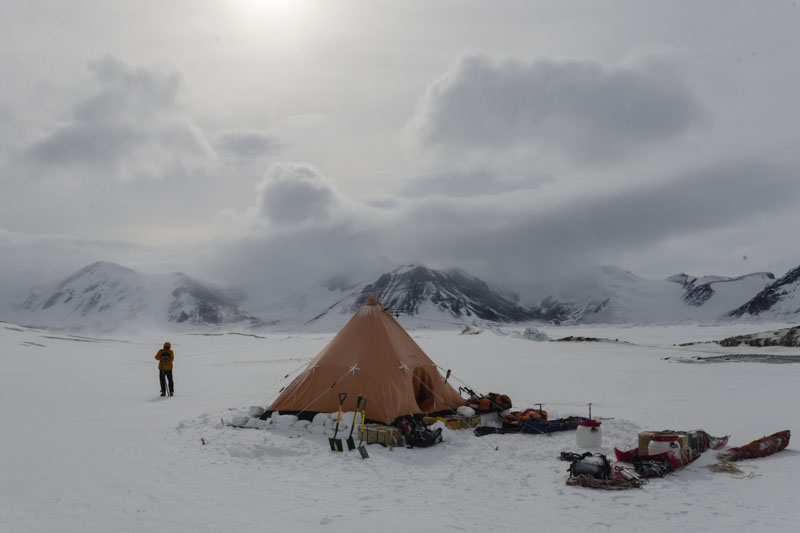 After finishing several hours man-hauling, we set up our tent in the twilight hours in early November, experiencing a night-time temperature of -22°C. Here we see the camp the morning after our arrival as storm clouds begin to build up. Snow blocks, boxes and equipment are placed on the valence to hold the tent down. | 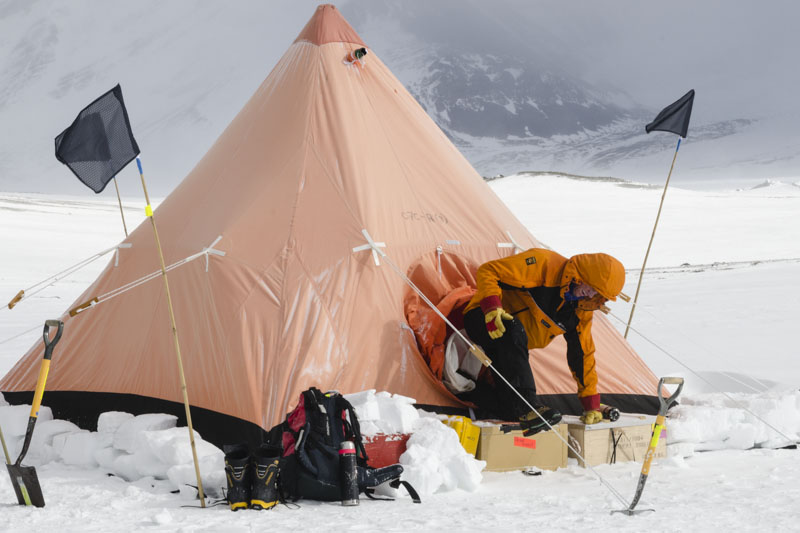 Marker flags temporarily help hold down the down, pending the finding of long snow-stakes from our ice-shelf depot. The entrance to the tent is a "tunnel" with passage through two layers of cloth that are tied together with tapes to minimise ingress of snow. | 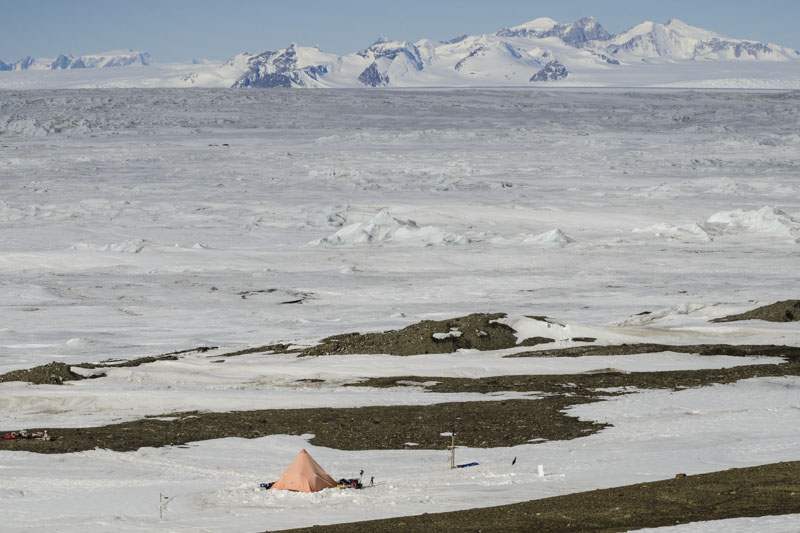 The location of our campsite is inside the ice-shelf moraine, beyond which the ice shelf stretches some 30 km to the distant mountains. The landing place was 4km away on flat snow beyond the heavily disturbed ice in the middle distance. | 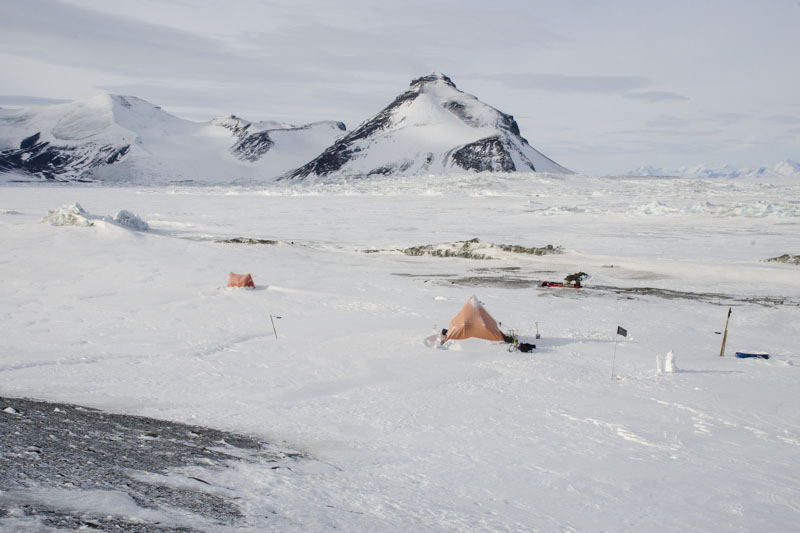 The view of the campsite looking towards frozen, snow-covered Ablation Lake to the cliffs of Ablation Point. The small ridge tent to the left is the toilet. Wires from the pyramid make up the aerial for the radio. |
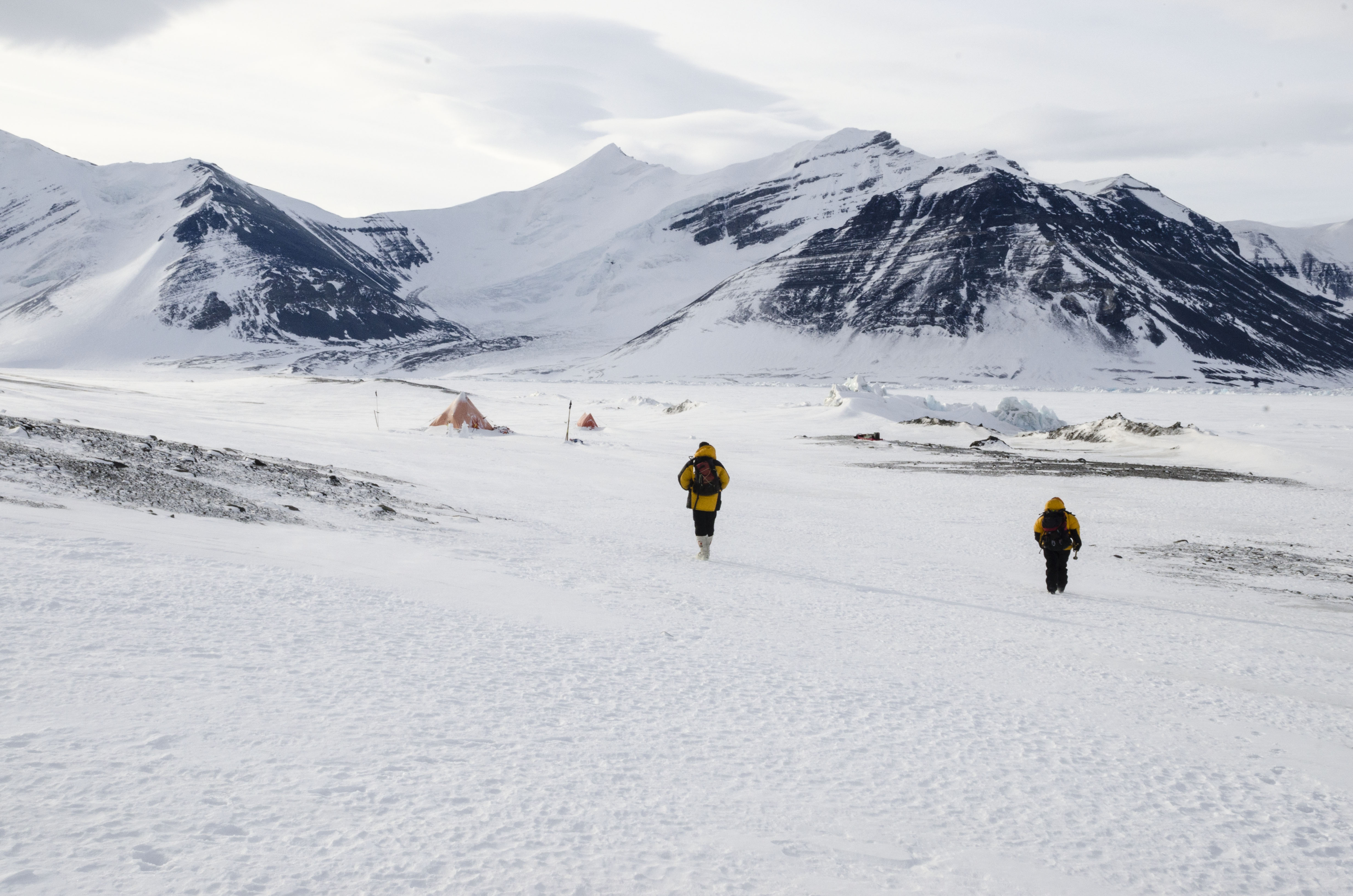 After a chilly, windy day in the field, we return to our tent, looking forward to getting warm with a cup of tea and food. | 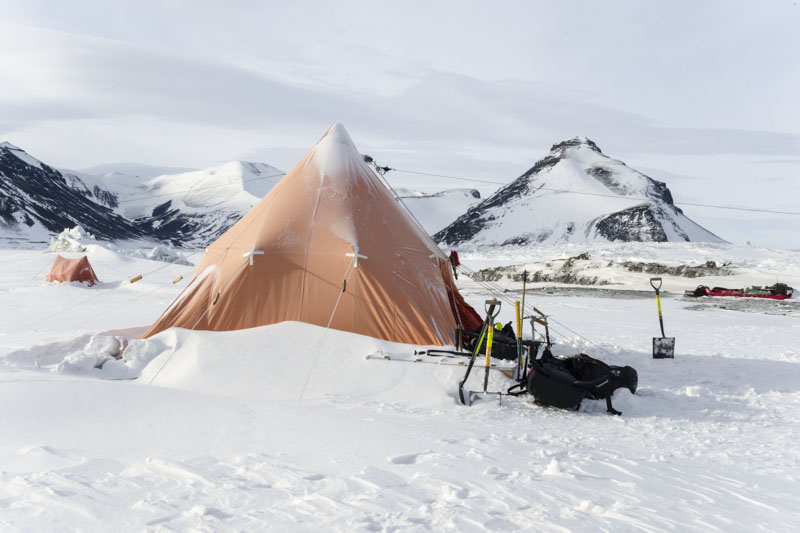 As the season progresses, and before the melt starts, wind build up snow drifts around the tent helping to make it even more secure against the weather. Digging tools can be seen at the ready. | 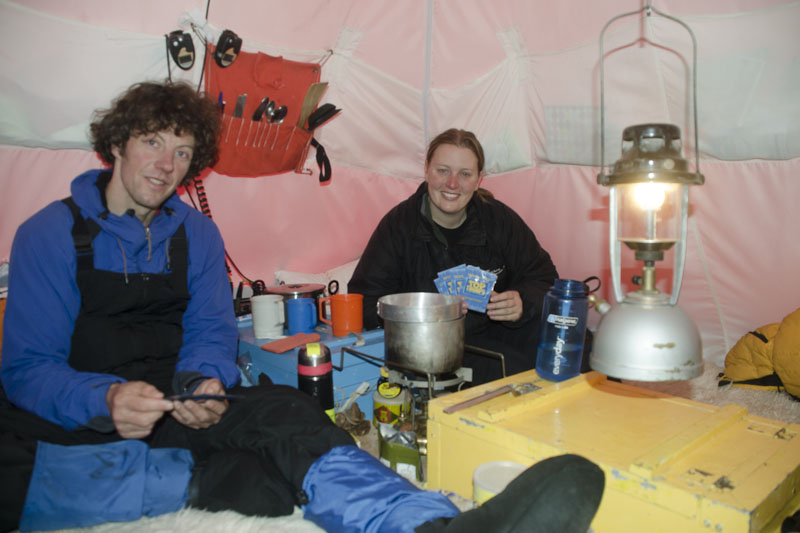 Ian and Bethan inside the tent on either side of the kitchen set-up. Snow is being melted on the stove whilst the Tilley lamp provides additional warmth. The radio is located behind Ian’s left elbow, and two carbon monoxide sensors are above his head. | 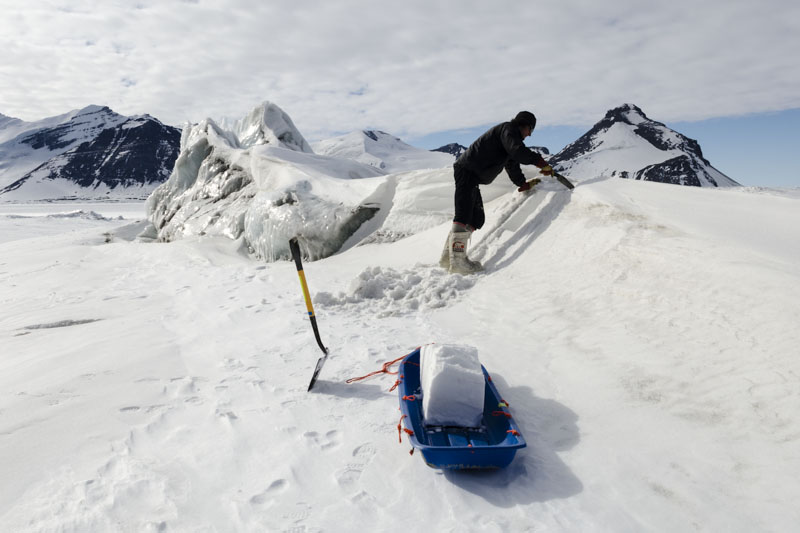 Ian "quarrying" snow blocks from a nearby drift. Melting snow for water is by far the most time-consuming part of cooking and providing for drinks. |
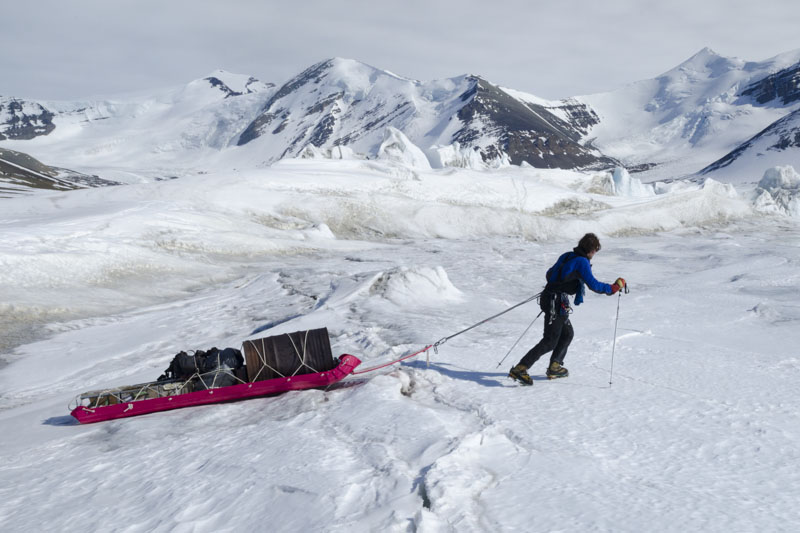 Our field area was previously occupied by a number of field parties, the earliest dating back to the 1930s. BAS has a policy of cleaning up old depots, and here Ian is using the sledge to take out an old fuel drum, old food and other rubbish. He is heading out to our depot on the ice shelf. | 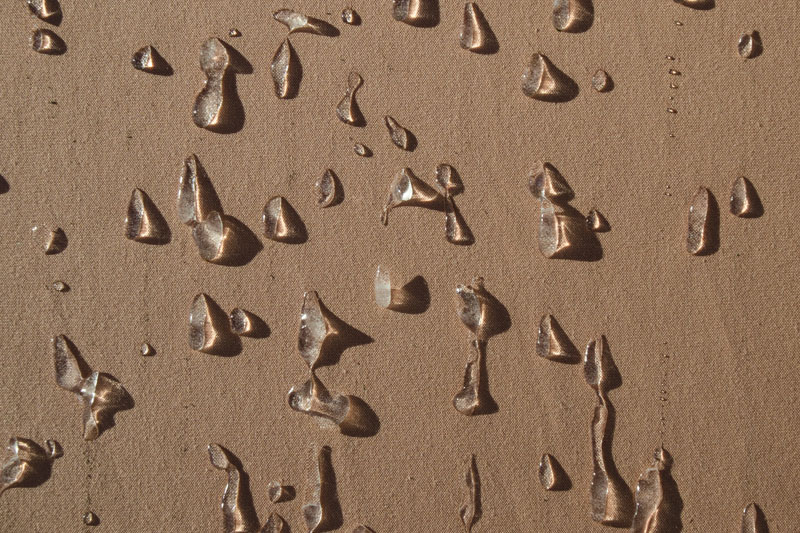 As the summer progresses, the sun gains some warmth, so snow on the tent melts into droplets of water, which then refreeze. | 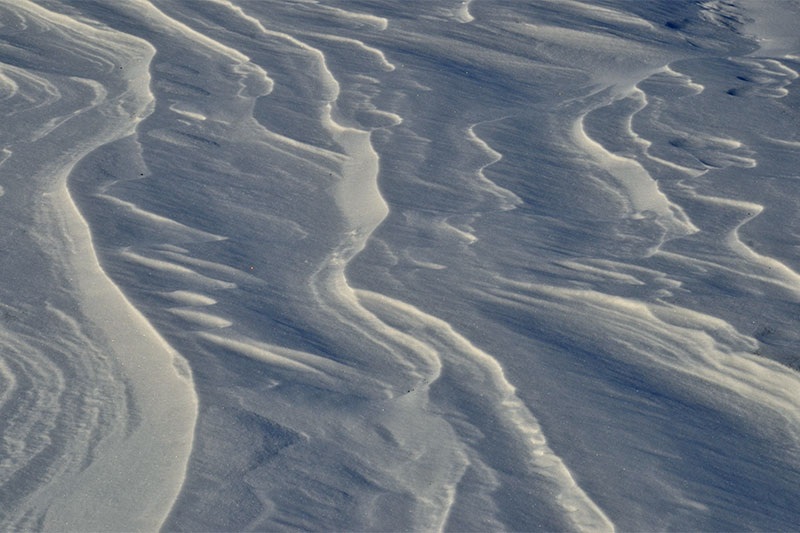 With little accumulation of snow during our stay, what was there was sculpted and hardened by the wind, forming attractive snow-dunes. | 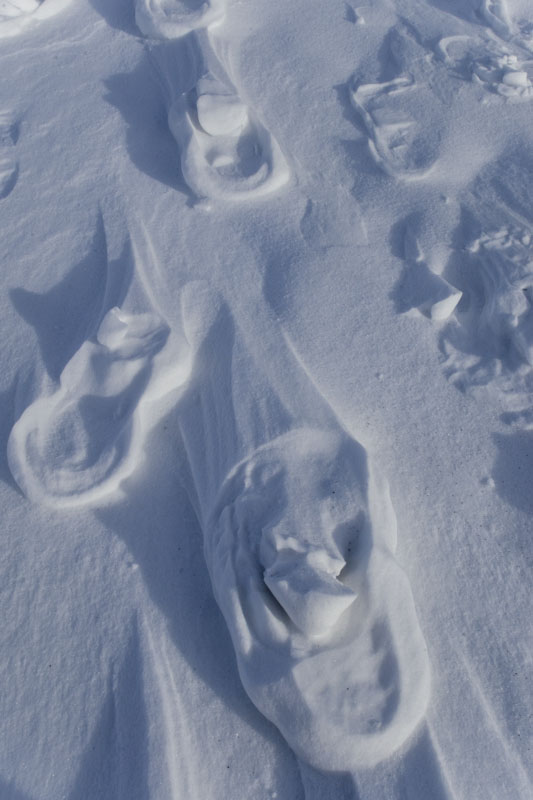 Elevated footprints in the snow, resulting from compaction by boots and wind-erosion of the softer surrounding snow. |
Photos Michael Hambrey, November and December 2012.
The tent is a two- or three-person pyramid with wide valences, made of Ventile cloth, and not unlike those used by Scott and Shackleton a hundred years ago. It is designed to withstand 100-knot winds when properly pitched (i.e. embedded in the snow). A separate ridge tent may be used as a toilet at a static camp. Inside the sleeping tent, old traditional Optimus stoves, burning paraffin, are used for melting snow and ice, and cooking. A Tilley lamp, hanging from the apex, provides warmth and helps dry clothes. A pair of carbon monoxide detectors is fixed to the tent walls, as poisoning from stoves is a major cause of concern. Double down sleeping bags with a fleece or cotton liner provide sufficient warmth. They are placed in a protective canvas bag, and placed in turn on a sheepskin mat, a Thermarest inflatable mattress and a wooden board. The stoves and cooking kit are placed between the sleeping bags, with supplies of snow and ice near the tent door. A radio is placed at the back of the tent, next to the "kitchen", where the field general assistant can operate it.
Food ("scradge") is supplied in 20-person day wooden ration boxes, and is commonly referred to as "man-food", an expression that dates from the time of dog-driving to distinguish it from "dog-foodv. The rations are a balanced diet high in fat and carbohydrates, which is necessary to provide the 3500 calories a day necessary to undertake fieldwork in sub-zero temperatures. The rations are supplemented by "goodies", supplied by the cook at Rothera, and include frozen meat and bread. This extra food is welcome on "lie-up" days, when the weather is too bad to work outside.
The BAS camping set-up follows a uniform standard, and designed for efficiency and safety. It has evolved over several decades, so field parties are expected to follow the routines. The one thing that has changed through time is food. No longer do we eat "pemmican", but instead freeze-dried dehydrated meals in individual vacuum packs that just require boiling water to be added, are supplied.
Our camping set-up was for three persons, two males on one side of the "kitchen", and one female on the other, allowing limited privacy and personal space. Our field location at Ablation Lake was 320 km from Rothera. |